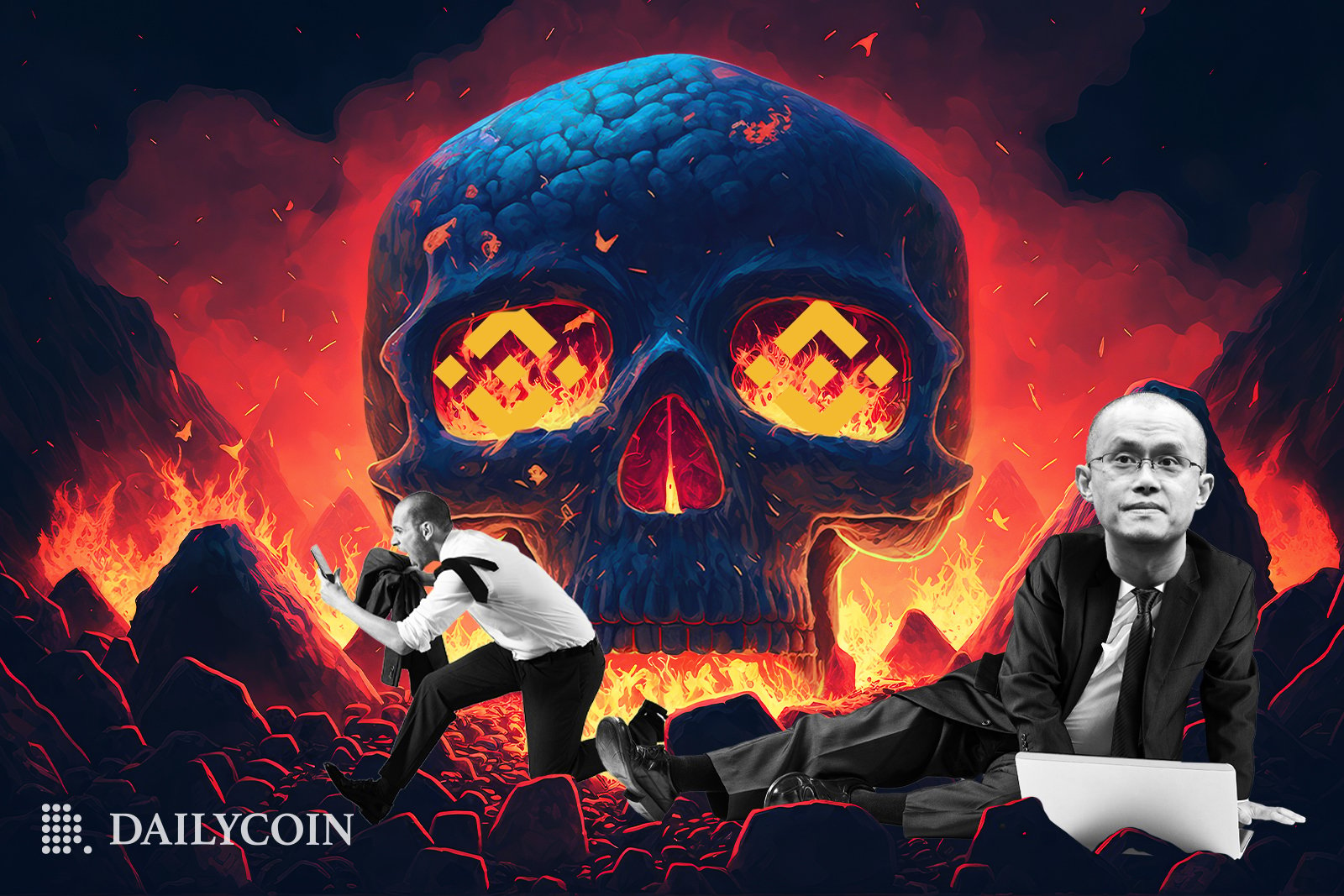
- New York regulators ordered Paxos to stop issuing Binance USD, the third-largest stablecoin. 90% of the stablecoin is on Binance.
- Binance saw hundreds of millions in outflows as markets fear US regulatory crackdown on exchanges.
- Binance CEO says that the exchange will continue to support BUSD and is looking for an issuer outside the US.
- BUSD Accounts for 21.7% of Holdings on Binance, or $13 billion. In September 2022, Binance delisted several major stablecoins from its exchange to promote BUSD.
The US’s heavy regulatory hand is rocking crypto exchanges. After a New York regulator ordered Paxos to stop issuing Binance USD stablecoin, markets panicked. Binance has seen hundreds of millions in outflows, while BUSD briefly lost its peg to the dollar.
On Monday, Binance saw $913M in net outflows, according to data from Dune Analytics. That is the largest net outflow from an exchange since the FTX crash.
At the same time, Binance’s CEO is downplaying the links between Binance USD and the Binance exchange. However, Binance’s links to the stablecoin go beyond just the name.
Binance CEO: Paxos Issues BUSD, Funds Are SAFU
Changpeng Zhao (CZ), CEO of Binance, addressed the situation on Twitter. On Tuesday, CZ stressed that Paxos, not Binance, issued BUSD.
Sponsored
“We were informed by Paxos they have been directed to cease minting new BUSD by the New York Department of Financial Services (NYDFS). Paxos is regulated by NYDFS. BUSD is a stablecoin wholly owned and managed by Paxos,” CZ said.
At the same time, Binance CEO said that user funds are safe, as Paxos has enough reserves to cover all withdrawals.
“Paxos will continue to service the product, and manage redemptions,” CZ said. “Paxos also assured us the funds are #SAFU, and fully covered by reserves in their banks, with their reserves audited many times by various audit firms already.”
In the meantime, Binance will continue to support BUSD “for the foreseeable future,” CZ said. At the same time, the exchange would also explore other options. “We will make product adjustments accordingly. eg, move away from using BUSD as the main pair for trading, etc,” CZ said.
Sponsored
Binance CEO also said that the exchange is exploring other issuers and stablecoins, including stablecoins pegged to other currencies. “We are exploring others, and non-USD based stablecoins,” CZ said.
BUSD Accounts for 21.7% of Holdings on Binance
Despite Binance’s CEO downplaying its involvement with Binance USD, Binance has significant interests in the asset.
BUSD currently accounts for 21.7% of current holdings on Binance, according to crypto analytics firm Nansen. About 90% of BUSD tokens in circulation, or $13 billion, are on the Binance exchange.
Interestingly, this number has risen since Binance’s last audit. On Feb 1, Binance reported that its users held $8,5 billion BUSD on the exchange. Binance had $10 billion BUSD in reserve, a collateralization rate of 120%.
In September 2022, Binance delisted several major stablecoins from the exchange to promote trading in BUSD. As a result, BUSD market cap surged to $20 billion.
However, after New York regulators cracked down on the token, its market cap will likely only go down. Paxos burned over $400 million in BUSD since regulators ordered it to stop issuing BUSD, according to Nansen.
On the Flipside
- More trouble could be coming to Binance soon. The US Securities and Exchange Commission issued a notice to Paxos, calling BUSD a security.
- As crypto markets are down, stablecoins are taking up a greater share of the crypto market cap. Currently, stablecoins have a combined market cap of $140 billion. This accounts for about 14% of the total crypto market cap.
Why You Should Care
Binance is by far the world’s largest exchange. Anything that impacts Binance will also have a systemic effect on the entire crypto market.
